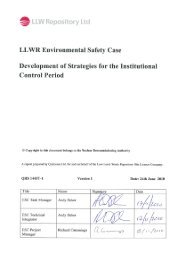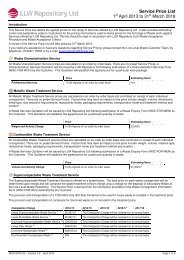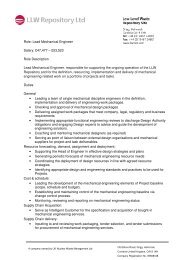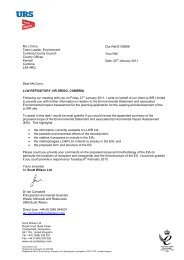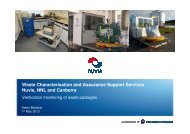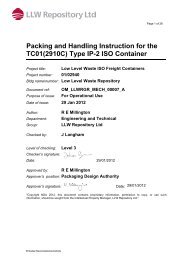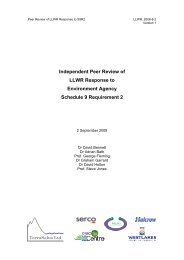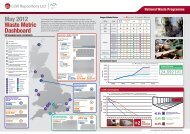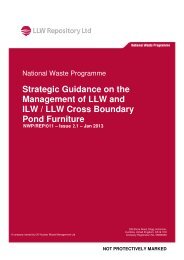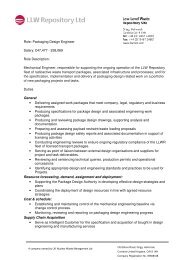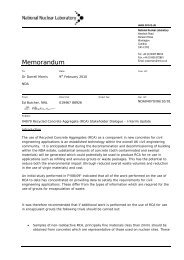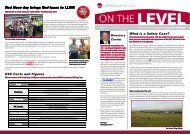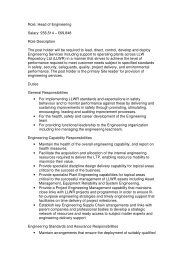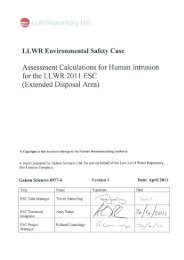Halcrow, Coastal Studies Forward Programme Data Compilation ...
Halcrow, Coastal Studies Forward Programme Data Compilation ...
Halcrow, Coastal Studies Forward Programme Data Compilation ...
You also want an ePaper? Increase the reach of your titles
YUMPU automatically turns print PDFs into web optimized ePapers that Google loves.
5 Conclusions and RecommendationsThis document provides a summary of the work completed under the <strong>Coastal</strong><strong>Studies</strong> <strong>Forward</strong> <strong>Programme</strong> over the period 2000 to 2008 to develop a conceptualcoastal change projection model; preliminary results from the CCCPM arepresented for future scenarios of sea-level rise which are projected to cause erosionand flooding of the LLWR site over various timescales.<strong>Coastal</strong> erosion and landscape change are recognised to be critical issues for thefuture safe management and sustainability of the LLWR. As the site is near thecoast, it is necessary both to assess the risk that the site could be breached bycoastal and estuarine erosion processes over the lifetime of the site, and to assessthe degree to which these processes could be accelerated by relative sea-level riseassociated with global climate change.The predictions for the site being impacted by coastal erosion indicates that 350mof cliff recession (i.e. the distance from the current shoreline to the site boundary)could be expected within 750-1,750 years from now, depending on the scenarioand rate of sea-level rise adopted.The relatively large time periods over which erosion is projected to impact the sitereflect the current levels of uncertainty in relative sea-level rise beyond the period100 years from now. Further work is needed to reduce critical uncertainties in theconceptual coastal change projection model.A key source of uncertainty is incomplete knowledge of the interactions betweenlandforms and forcing processes. It is recommended that further work isundertaken to link recent storm events with shoreline responses that will havebeen recorded by the repeat annual LiDAR and shoreline inspection surveys.There are a number of uncertainties with the assessment tools used to inform theCCCPM which would benefit from further work, in particular:the cliff response to relative sea-level change, especially as the predictedfuture rates of relative sea-level change are higher than that experiencedover the historical record. It is unclear whether the linear response modelDoc No 1 Rev 2: Date: May 2010 42



